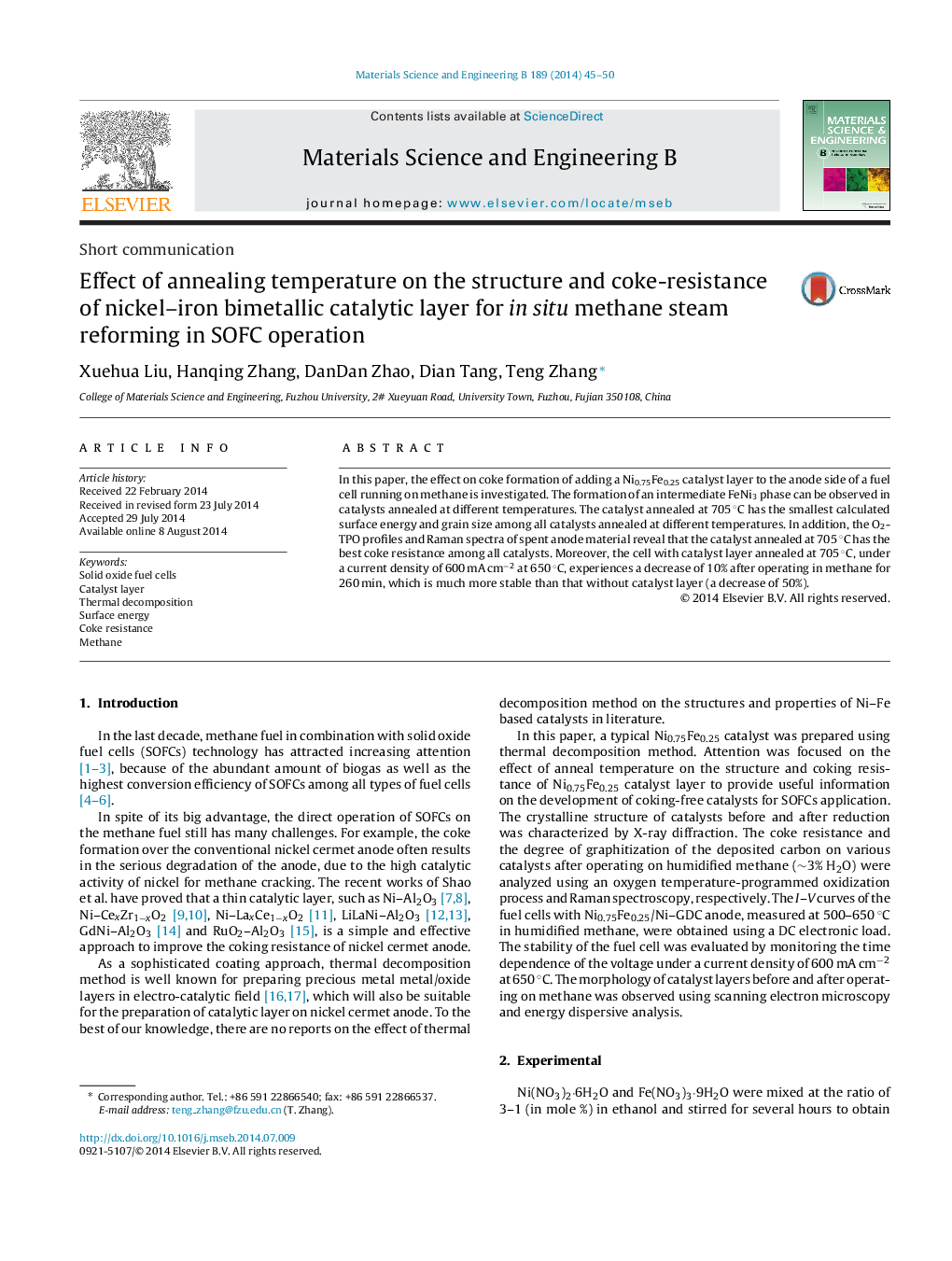| Article ID | Journal | Published Year | Pages | File Type |
|---|---|---|---|---|
| 1528725 | Materials Science and Engineering: B | 2014 | 6 Pages |
•An intermediate FeNi3 phase forms in all Ni0.75Fe0.25 catalysts in present work.•The catalyst annealed at 705 °C has smallest calculated surface energy.•The catalyst annealed at 705 °C also exhibits the best coke resistance in methane.•The cell with catalyst layer annealed at 705 °C has the best stability in methane.
In this paper, the effect on coke formation of adding a Ni0.75Fe0.25 catalyst layer to the anode side of a fuel cell running on methane is investigated. The formation of an intermediate FeNi3 phase can be observed in catalysts annealed at different temperatures. The catalyst annealed at 705 °C has the smallest calculated surface energy and grain size among all catalysts annealed at different temperatures. In addition, the O2-TPO profiles and Raman spectra of spent anode material reveal that the catalyst annealed at 705 °C has the best coke resistance among all catalysts. Moreover, the cell with catalyst layer annealed at 705 °C, under a current density of 600 mA cm−2 at 650 °C, experiences a decrease of 10% after operating in methane for 260 min, which is much more stable than that without catalyst layer (a decrease of 50%).
